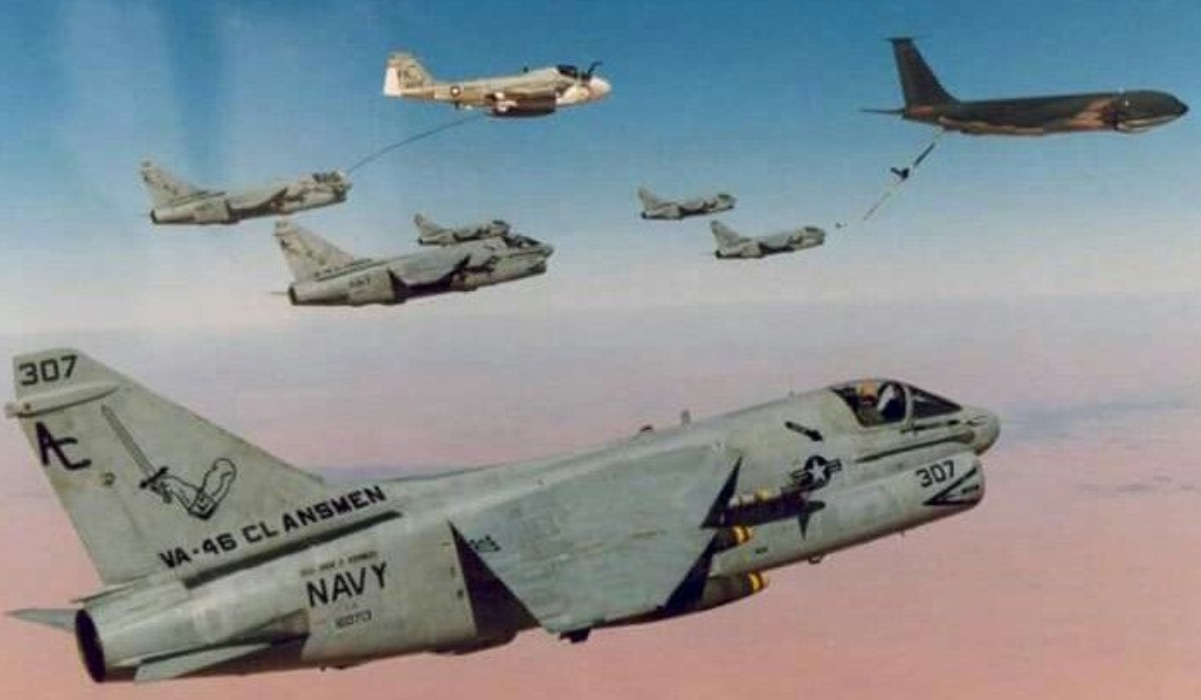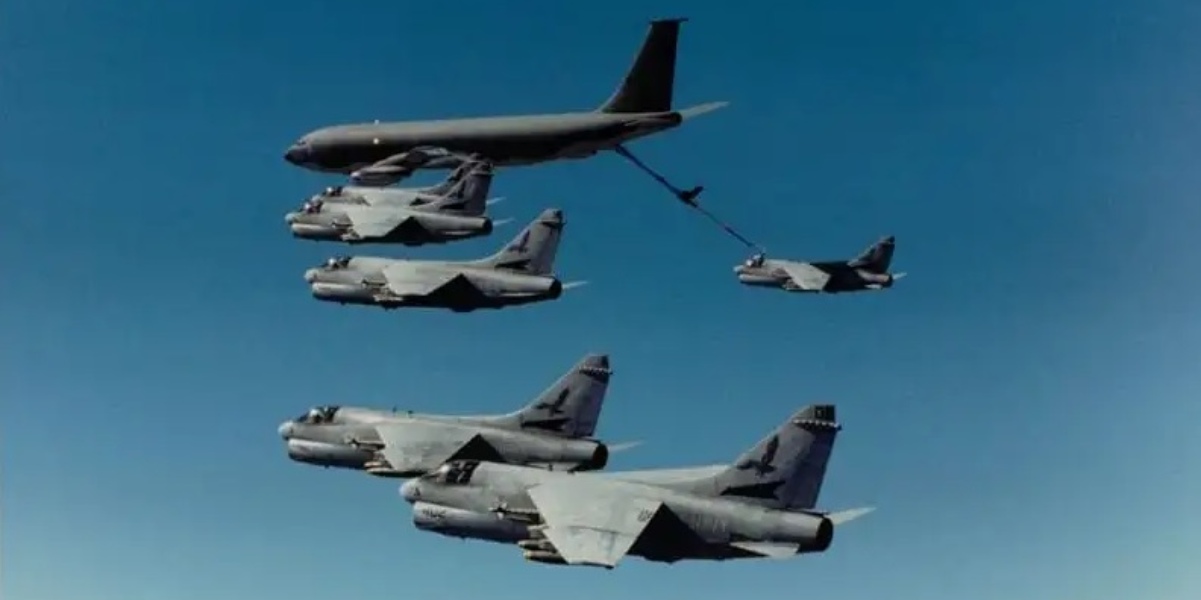TRANSPAC flight
An aircraft traveling across the Pacific Ocean from Australasia, East Asia, and Southeast Asia to North America, Latin America, or vice versa is called a transpacific (TRANSPAC) flight. Commercial planes, balloons, and military aircraft have all conducted these kinds of flights.
David Tussey, former US Navy A-7 Corsair II pilot, recalls on Quora;
‘I have listened to taped music* during a long flight where aerial refueling was involved.
‘Here’s the story.
‘I was in a Navy A-7 squadron based in Yokosuka, Japan. We were part of Airwing 5 onboard the USS Midway. We flew out of NAF Atsugi.
‘The USN A-7s were transitioning to F/A-18s and we were told to bring the aircraft back to NAS Lemoore, California, and pick up new F/A-18s. That involved a very long “TRANSPAC” effort with USAF refueling tankers. (The Airwing’s F-4 Phantoms had to do something similar.)
‘The USAF has performed hundreds of these TRANSPAC/TRANSLANTs where they assist in ferrying numerous tactical aircraft to the US from overseas bases. They have developed a very specific set of rules, guidelines, and procedures on how to safely perform them. They’re absolute pros. And the operation is quite complex. We planned and planned the route, the diverts, the emergency procedures, the fuel consumption of course, and so on.
TRANSPAC during daylight hour
‘So…we grouped the plane. I was in a flight of five aircraft. The route was from Japan to Guam to Hawaii to California. Japan to Guam did not require any external USAF tankers. We configured an A-7 with the buddy store package, took gas en route, and the tanker returned to Atsugi while the five us flew on to Guam. This was back in the day when the USN had an NAF in Guam. (Today, that’s all combined with Andersen AFB, which is also where the USAF KC-135 tankers were.)

‘The next day was the Guam to Hawaii flight… long trip. It was the longest flight I ever flew in the A-7, 9.5 hours. One of the USAF rules was to conduct the TRANSPAC during daylight hours as much as possible. That meant a pre-dawn launch from Guam, and a sunset landing at NAS Barbers Point (now closed).’
Tussey continues;
‘So…in the dark we manned up 5 USN A-7Es, and took off at the prescribed time; wheels in the well just before the sun came up. And two KC-135 tankers took off the same time out of Andersen AFB, also on the island of Guam.
‘It worked perfectly. Just as we got all five A-7s in formation, we could visually see the two KC-135s just ahead. Sun was up and the weather could not have been better. We all five hit the tanker immediately, just to test that we could take fuel. And then we were on our way.
Memorable refuelings
‘One of the more memorable refuelings occurred when we were quite low on fuel, and it was (as planned) directly overhead Wake Island. So, if you couldn’t refuel there, then you could just divert right to Wake. It was a real challenge to conduct aerial refueling when you’re taking on nearly 12,000 lbs of fuel; you start out very light, and by the time you’re topped off, you’re at full MRT power just to stay in the basket.
‘We had one bigger refueling and the first KC-135 returned to Andersen. The remaining one would remain with us to Hawaii.
Listening to Walkman during TRANSPAC flight
‘We all carried a Sony Walkman with recorded music that we listened to while en route and not refueling. I listened mostly to Madonna and Stevie Winwood, I recall. If you put the earpiece inside your oxygen mask and hit the “talk” button, you could broadcast your music to the rest of the aircraft. Very clever. LOL
‘Of course, you only played music when you weren’t refueling. Aerial refueling takes tremendous concentration to stay in the basket behind a KC-135. So, no fooling around.
‘We had box lunches with several sandwiches, cookies, juice, etc. Way too much food. It was the only time in 20 years and 4000 hrs of flying that I ever used the “relief tube” in the airplane. Had to put it on autopilot, unstrap, and let loose to make that work.
Tanking every 30–40 min
‘The long leg from Wake Island to Hawaii, the KC-135 kept us nearly topped off with fuel all the time — because if you for some reason couldn’t take gas, it was a long, long divert to Midway, back to Wake, or into Hawaii on a max-range emergency “bingo” profile. So, we tanked every 30–40 min, over a 9-hour flight.’
Tussey concludes;
‘But luckily, all went well. All the bird performed perfectly. We kissed off the USAF tanker about a hundred miles out from Hawaii. He went to Hickham, while we took the A-7s to NAS Barbers Point. Hit the break just as the sun was setting. We had a maintenance crew travel via C-130 ahead of us to Barbers Point, so they had everything set up for us when we landed. All the jets were “up”, and we had a two-day break in Hawaii.
‘Finally, we took the one USAF KC-135 and flew from Hawaii to NAS Lemoore, California. Easy cheesy.’
* Fighter pilots are not allowed to carry electronic devices with them. That includes music players. The chances of a gadget interfering with onboard avionics are rather slim, but it could happen. However, many fighter pilots break that rule. Especially on long (and boring) ferry flights. They just get earbuds that won’t conflict with the radio earphones in the helmet.

Photo by CMDR. Leenhouts / U.S. Navy

